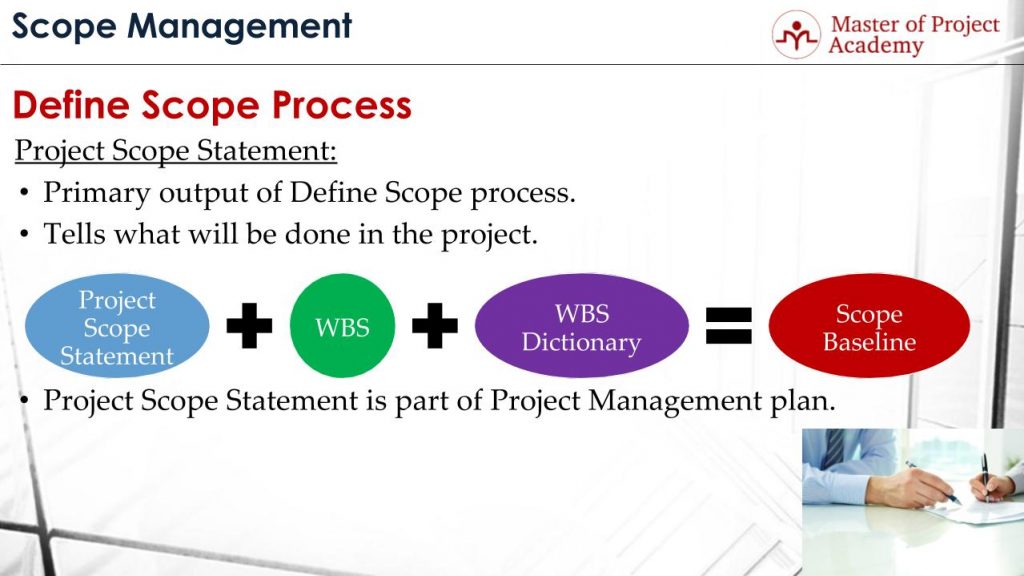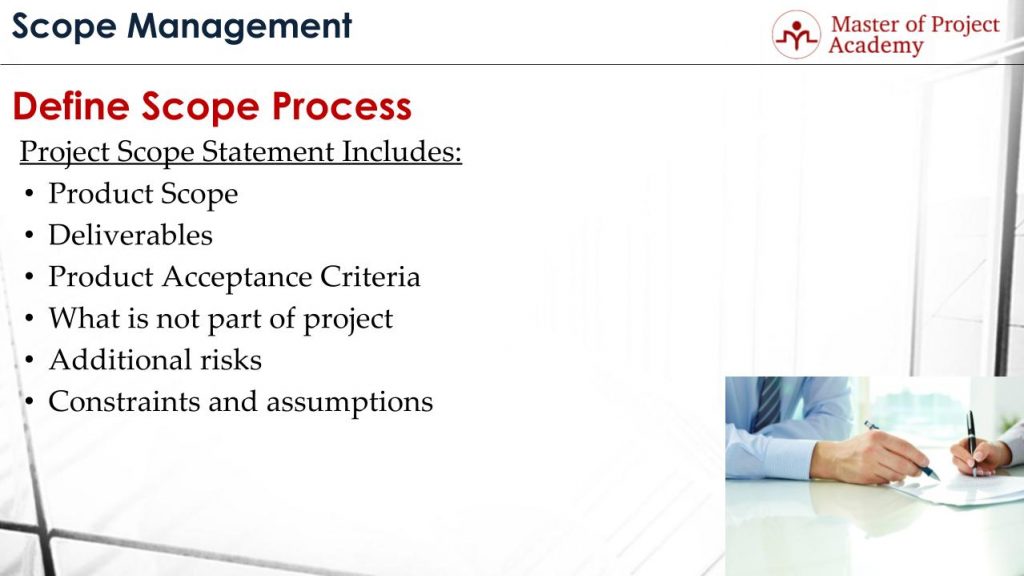The project scope statement is a frequently used term in Project Management. As stated in the PMP certification course, it belongs to the project management knowledge area called Scope Management. The aim of PMP Scope Management is to define what will be done and what will not be done during the project. This knowledge area has six processes. And the second process which is Define Scope has this primary output: Project Scope Statement. In this article, we are going to describe what is Scope Statement in detail.
Attend our 100% Online & Self-Paced One-Hour Free PMP Training.
What is the Project Scope Statement?
From an online PMP course, you can learn that the Project Scope Statement is the primary output of the Define Scope process. This process draws the boundaries of the project, outlines the work that will be delivered throughout the project and defines the major deliverables of the project. We can say that the main purpose of the Define Scope process is finalizing the project scope, after reviewing and evaluating all customer requirements collected during Collect Requirements process.

Project scope statement officially declares what will be done in the project. After the scope statement is produced, every project stakeholder must agree on this. Because it will be the detailed scope of the project and what will be delivered throughout the project.
Scope baseline is a project baseline and the Scope Statement, Work Breakdown Structure, and Work Breakdown Structure Dictionary together, constitutes the Scope baseline. The work breakdown structure shows the hierarchy of project deliverables in a structured manner. Work Breakdown Structure Dictionary provides detailed information about each item in the Work Breakdown Structure.

Project Scope Statement is a part of the project management plan. It is not a management plan but it is a crucial document since it will outline the scope of the project in detail.
What is Included?
Now let’s go over what 5 items are included in the the scope statement.

- Product Scope: Product is an output of the project and features, specifications, details about the product are described in the product scope. And therefore, since the product is a project deliverable, product scope will be included in the Project Scope Statement as well.
- Deliverables: Project will produce deliverables throughout the project until all project scope is completed. Let’s consider that you are working in an e-commerce shopping website project. The final product is end-to-end working e-commerce shopping website for sure. But there will be interim deliverables such as login screen, category page, member profile screen etc. And these interim deliverables can be tested by the customer before waiting for the final product delivery. Since deliverables are smaller parts of the overall project scope, these are listed in the scope statement.
- Product Acceptance Criteria: Product acceptance criteria shows in what conditions customer will accept the project. This is actually a handshake between the project team and customer that in what circumstances the customer will accept the final project and give acceptance. These criteria generally generated through requirements. For instance, if it is agreed with the customer in the beginning that the member login will be accomplished in less than 2 seconds, this is written in product acceptance criteria and when the e-commerce shopping website is ready for customer tests, if member logins are processed successfully in less than 2 seconds, customer must accept.

- What is not part of the project: It must be written in project scope statement as well. Because in some cases, some project stakeholders might think some out of scope items in the project scope. Therefore, it is better to clearly outline critical points which are not in the scope of the project. Let’s consider that you are working on the installation of a new database project in an IT company and the scope is only installation and configuration. It is better to mention that migration of data from old database in out of scope. Because some stakeholders might consider that new database installation will cover also migration of data as well.
- Additional risks, constraints, and assumptions: Risks that might affect the project must be included in the scope statement as well as Constraints and assumptions. Project constraints limit the dimensions of the project and planning is done based on these constraints and assumptions. If constraints or assumptions of a project do not go as planned, these will affect the project scope and other aspects respectively. Therefore, these must be written down in the project scope statement.



One thought on “What Are The 5 Items To Include In The Project Scope Statement?”
Comments are closed.